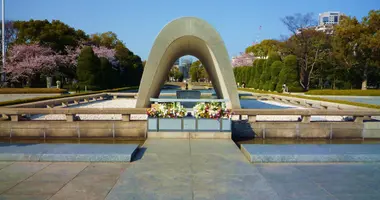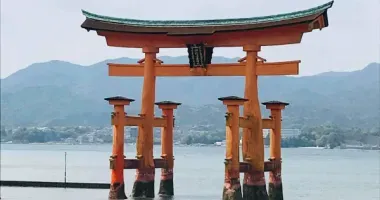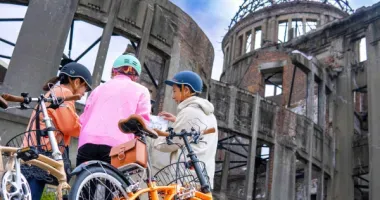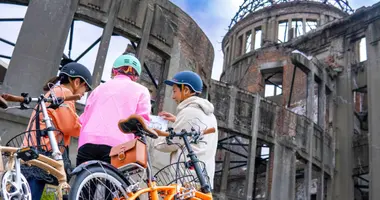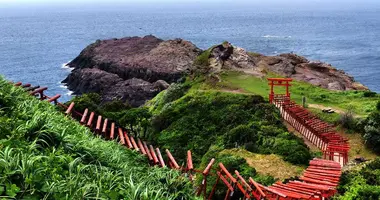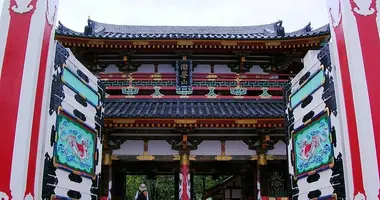Fudo-in Temple Hiroshima
- Published on : 23/09/2015
- by : Japan Experience
- Youtube
Fudo-in Temple in Hiroshima survived the atomic bomb in 1945 and is an historic Shingon sect temple with its buildings dating back to the 16th century.
- History of Fudo-in Temple
- Fudoin Temple Buildings
- Access - Getting To Hiroshima
- Japan Temples & Shrines
Fudo-in Temple, Hiroshima 不動院
Jake Davies
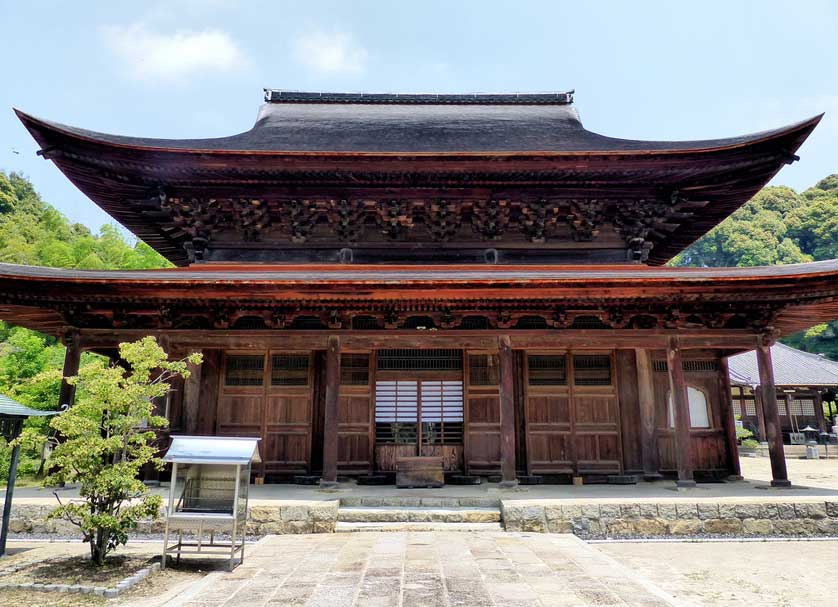
The Kondo, Fudoin Temple, Hiroshima, Hiroshima Prefecture
Hiroshima is known as a modern, bustling, city that rose out of the ashes of its virtually complete destruction by the atomic bomb dropped on it in 1945. Hiroshima city not a place that you would think of for historic temples, but surprisingly there are a few.
One is Mitakidera Temple, located about three and half kilometers from the epicenter of the blast in a steep, narrow valley that protected it from the full force of the explosion. The other is Fudo-in Temple, four kilometers directly north of the A Bomb Dome. The roof of the temple suffered some damage but the main building remained intact, and is in fact the only National Treasure in Hiroshima.
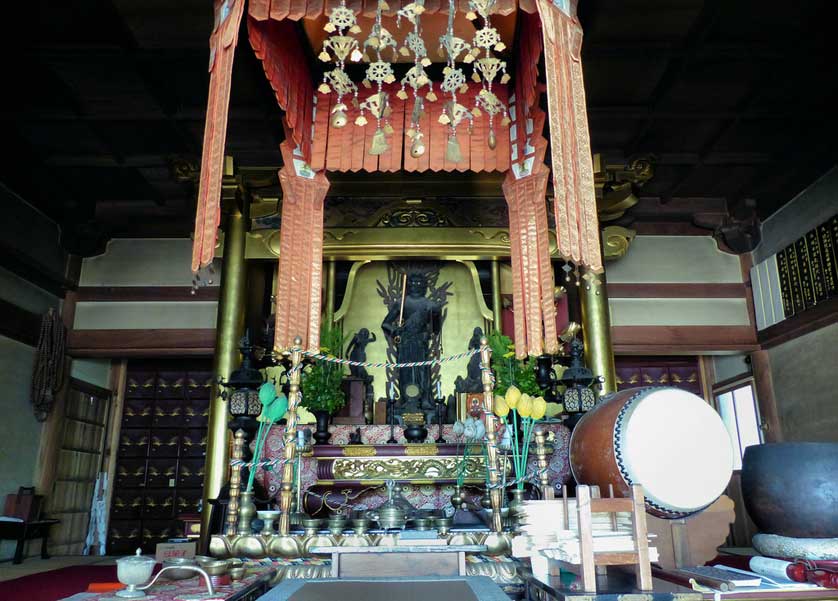
Inside the Fudo Hall, Fudoin Temple, Hiroshima
History of Fudo-in Temple
It is not known for certain when a temple was first built at this location on the bank of the River Ota. Some suggest the famed itinerant monk Gyoki (668–749) built one in the 8th century, he was certainly a very busy man.
Gyoki was a thorn in the side of the government of the Nara Period who had outlawed the teaching of Buddhism to the common people but he traveled widely in the Kansai region establishing temples and helping villagers construct roads and bridges.
He was pardoned by the government once they realized the civil engineering projects he undertook were advantageous to them and they enlisted his help in the construction of Todaiji in Nara. The massive number of temple foundings attributed to him is somewhat beyond the bounds of practicality with literally hundreds and hundreds of them all over the country claiming links to him.
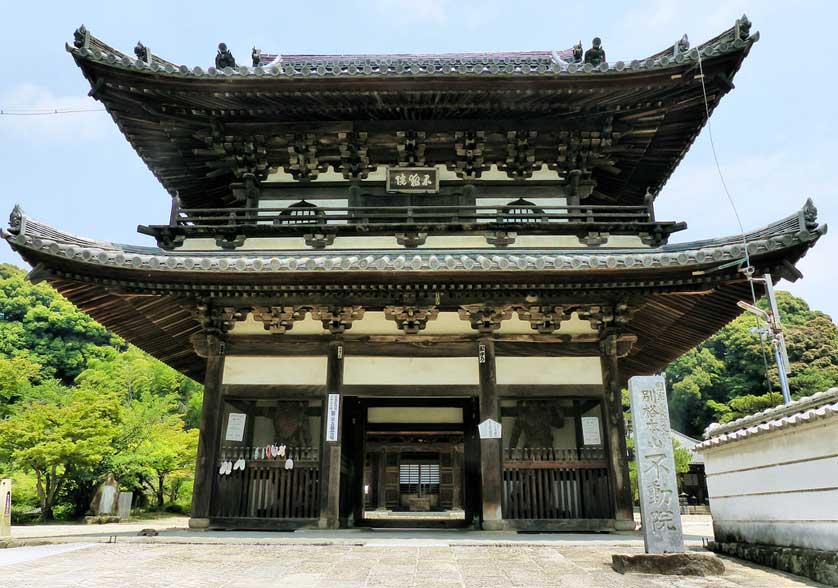
Niomon Gate, Fudoin Temple Hiroshima, Hiroshima
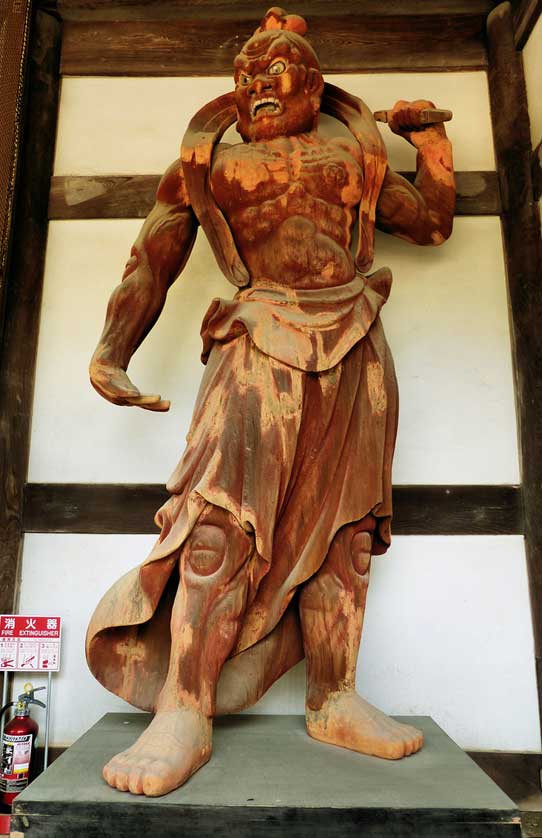 A Nio Guardian, Fudoin, Hiroshima Prefecture
A Nio Guardian, Fudoin, Hiroshima Prefecture
Evidence from a statue at Fudoin seems to confirm that by the 11th century there was certainly a temple at this site however. In the 12th century warrior rule was established in Japan with the Kamakura Shogunate followed in the 14th century by the Ashikaga Shogunate.
The new samurai rulers had embraced the newly imported Zen sects of Buddhism, less perhaps for any intrinsic qualities of the teachings and practices, but rather because as a new sect it had few ties to the aristocrats and Imperial families.
The dominant sects of Buddhism, Tendai and Shingon, were both closely linked to the aristocratic families from where they received grants of land and income, in return for which leading posts within the religious hierarchy were given to sons from the ruling families.
By sponsoring Zen temples the samurai rulers were creating their own religious power structures. An example of this would be the network of Ankoku temples set up by the first Ashikaga shogun Takauji Ashikaga. Reflecting the founding of a nationwide set of temples, Kokubunji, with one in each province by Emperor Shomu in the Eighth century, Takauji established Ankoku temples in each province in the 14th century. The name Ankokuji meaning "temple for national pacification."
The object of each temple was for the pacification of the restless spirits of all the samurai who had died in battle. The one built in Aki Province, now known as Hiroshima Prefecture, was located here. In the early part of the 16th century the temple was destroyed during a battle between the Takeda and Ouchi clans. Several decades later it was rebuilt and several of the buildings there today date from this time. In the 17th century the temple was renamed Fudoin and was switched from Zen to Shingon.
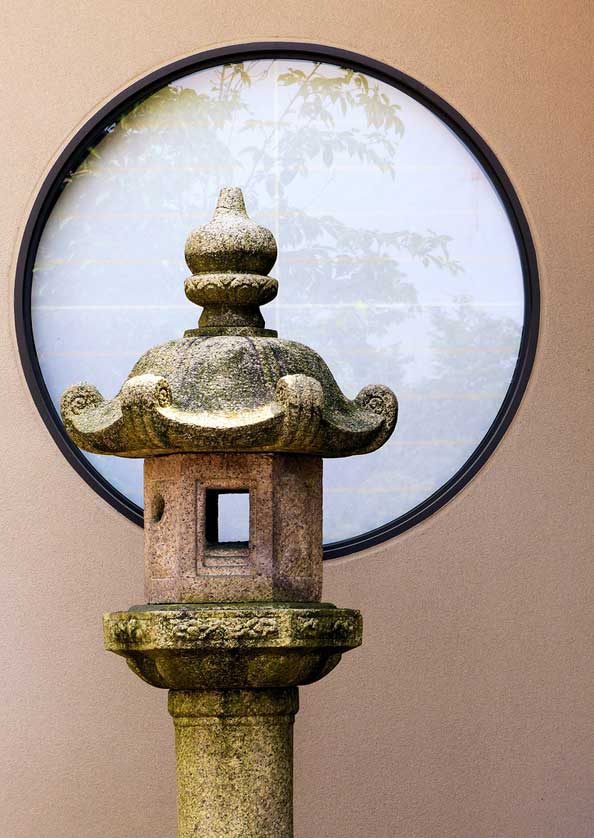
Lantern and circular window, Fudoin Temple, Hiroshima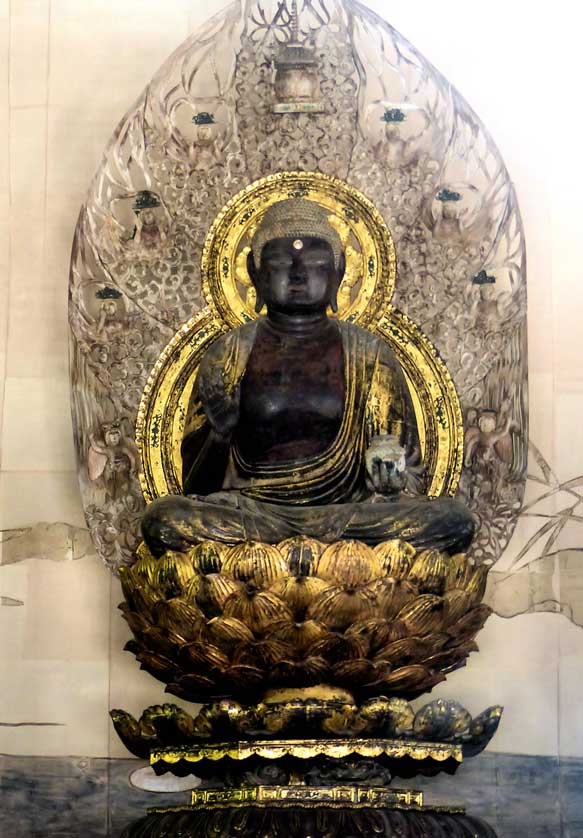 Yakushi Buddha Statue, Fudoin, Hiroshima
Yakushi Buddha Statue, Fudoin, Hiroshima
Fudoin Temple Buildings
Approaching Fudoin Temple the first thing you see is the massive gate, a Niomon of two storeys. It was built in 1594 and is a Culturally Important Property. The priest at the time, Ankokuji Ekei, accompanied Hideyoshi on his invasion of Korea and it is believe the timbers to build the gate were plundered from Korea. The two guardian Nio statues are equally massive, being almost 3 meters in height. Carved out of cypress they are dated to 1294.
After passing through the gate you approach the Kondo, the main hall, which is a National Treasure. It was constructed in 1540 in what is now Yamaguchi and was moved here about 50 years later when Ekei expanded the temple.
The Kondo at Fudoin is the largest remaining example of Karayo (Kara style) building in Japan. Karayo was the Chinese style of architecture that was particularly popular with Zen temples in Japan. The Kondo at Fudoin features some massive beams, the largest being more than 7 meters in length.
The ceiling has paintings of celestial angels and dragons. It houses a statue of Yakushi Nyorai, known as the Medicine Buddha. It is attributed to Jocho, a famous sculptor who lived at the end of the Heian Period in the 11th century. It is an Important Cultural Property.
To the left of the Kondo is a small, overgrown garden, but to the right is another Important Cultural Property, the vermillion painted Bell Tower dated to 1433. To the rear of the Kondo is a small Inari Shrine and a Fudo Hall enshrining Fudo Myo.
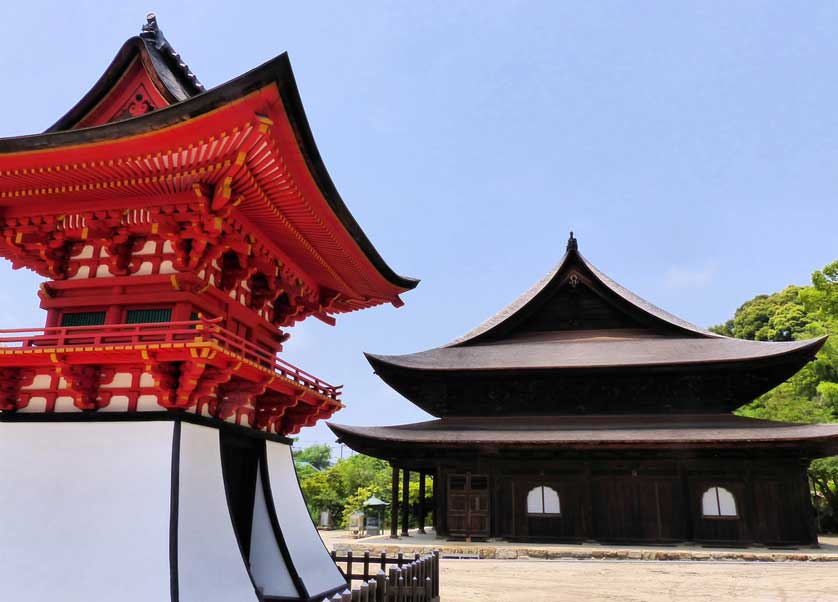 The Bell Tower and Kondo, Fudoin, Hiroshima
The Bell Tower and Kondo, Fudoin, Hiroshima
Fudoin Temple
3 Chome-4-9. Ushitashinmachi
Higashi Ward, Hiroshima City
Hiroshima 732-0068
Tel: 082 221 6923
Free entry
Located just 200 meters from the Fudoinmae Astram Station.
Fudoin Temple is a site on the Futabanosato Historical Walking Trail.
Access - how to get to Hiroshima
Rail
Hiroshima Station is served by the Sanyo Shinkansen line to Osaka (2 hours 10 mins), Tokyo (4 hours 30 minutes to five hours), Kyoto, Nagoya and Fukuoka/Hakata.
Other railway lines connecting from Hiroshima are the Sanyo Main Line for Miyajimaguchi, the historic town of Iwakuni and Tokuyama, the Geibi Line for Shiwaguchi and Miyoshi, the commuter Kabe Line for Omachi, Midorii and Kabe and the Kure Line for the port city of Kure, Hiro, and Takehara.
Bus
There are long distance bus services from outside Hiroshima Station to Tokyo, Kyoto, Osaka, Nagoya, Takamatsu, Fukuoka and Nagasaki.
Ferry
There are ferry and hydrofoil services to Matsuyama on Shikoku as well as ferry boats from Hiroshima Port to Nanoshima, Nomishima and Etajima.
Other places of interest in Hiroshima include Hiroshima Castle, the Mazda Museum, the JMSDF Kure Museum, Hiroshima Museum of Art, the Hiroshima Peace Pagoda and Hiroshima Children's Museum.
